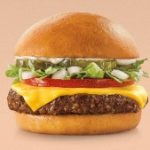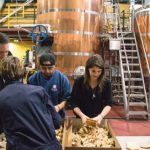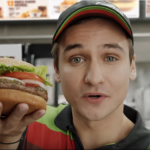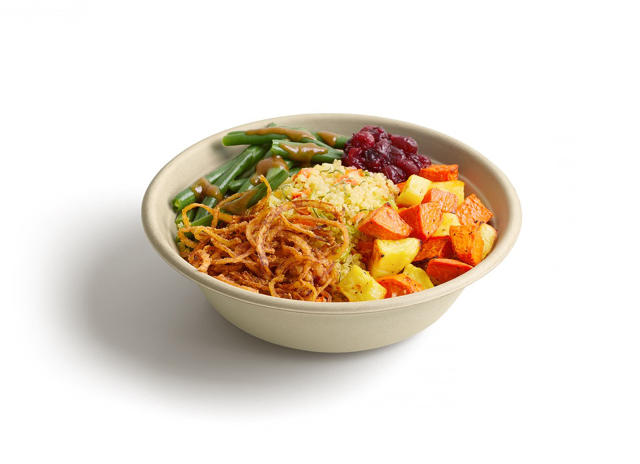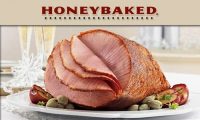the future of quick meals Is . . . Quinoa?
Eatsa desires to get rid of meat via the usage of large data to hook the united states of america on a scrumptious grain. And it is seeking to do it with almost no staff.
August 25, 2015
“take a look at that taste JAR!” Scott Drummond, the manager technique officer and cofounder of Eatsa, a fast-food restaurant scheduled to open in downtown San Francisco in late August, pauses his slide deck on a chart displaying the implications of the corporate’s latest spherical of “sensory science checking out.” Pitted towards actual menu objects from a half-dozen would-be competitors within the wholesome quick-informal house, Eatsa’s quinoa-based totally, all-vegetarian lunch bowls scored JAR, or “on the subject of proper” numbers that put them near the highest of the heap throughout measures like saltiness, spiciness, juiciness, and overall deliciousness.
It’s late could—about two months sooner than the shop’s scheduled launch—and the sensory science knowledge naturally warms the members of Eatsa’s launch staff gathered here inside of a large, unheated garage under a nondescript Nob Hill rental building, beside a existence-size foam-board mockup of the primary store. They’re knowledge guys and model guys—black fleece, denims, and gown shoe-sporting Bay house tech guys. now not food guys. but when Drummond and his knowledge are to be believed (for the report, I was no longer offered a style take a look at), Eatsa’s meals and sensory scientists have performed pure culinary alchemy. They’ve made quinoa—the great-for-you grain du jour now appearing in a bland, watery model at a salad bar or potluck near you—in truth craveable.

Their secret? It’s science, no longer simply more fats and salt. They undertook a roughly two-yr means of gathering and examining information on shopper taste preferences, and engineering a taste expertise—naturally, and with out excessive fat, sodium, or sugar—with the addictive qualities of the best quick meals. They use just a few types of quinoa (pink and white). For some dishes, they toast it, others they stir-fry it, and others they make it right into a roughly backed quinoa “stuffing.” it is scrumptious enough to devour undeniable—then, they add the fixings.
The kicker is the cost point: all of Eatsa’s lunch bowls, eight signature combos featuring quinoa that’s toasted, stir-fried, or became stuffing and combined with greens and sometimes cheese, have a $6.95 base value. for instance, the Harvest Bowl, for $6.ninety nine, contains quinoa stuffing, cranberry chutney, roasted autumn vegetable, inexperienced beans, crispy onion strings, mushroom gravy, and almonds. Then that you may add any additional ingredients—like cheese, to a dish that does not already embody it. That’s a superb notch in pricepoint under a Chipotle burrito or a salad from wholesome fast-meals chains like Sweetgreen or uniqueness’s. Forgoing meat helps preserve the price of items down. and in contrast to these places, Eatsa (whose guardian company is known as Keenwawa) makes no unique claims—organic, local, GMO-free—for its substances. They’re just “wholesome.” And in a metropolis like San Francisco, $7 for lunch is almost McDonald’s low-cost.
Drummond, his cofounder and CEO Tim young, and their lead investor, David Friedberg—who in 2013 sold his local weather-prediction startup, the local weather enterprise, to Monsanto for about a thousand million dollars—have McDonald’s-size ambitions. Quinoa is only one a part of the story, and arguably a much less essential part than the best way Eatsa plans to make use of technology to become not just the menu but the whole fast-meals expertise by using casting off humans—and human interplay—wherever that you can think of.

That may appear to be a business adaptation focused on the Bay space’s asocial programmer demographic. however really, Drummond says, it’s about efficiency. “We’re using data science to power the entire Eatsa expertise,” he says. And what the info inform him is that human cashiers suck, a susceptible hyperlink in the food-supply chain. Eatsa removes them. “Cashiers won’t be a dilemma,” says Drummond.
moderately, buyers will order at one of the touchscreen kiosks, paying electronically. No cash. When their order is prepared—in less than two minutes, is the plan—invisible hands slide it right into a cubby, which lights up with their title and order quantity. in the event you don’t wish to ask the shop’s single human “concierge” for lend a hand, you need by no means engage with another particular person to get your lunch. And because of that, Drummond promises, consumers will never have to attend in a line.
quickly after launch, Eatsa plans to add better mobile ordering that enable buyers to position an order on their smartphone, set a pickup time, and to find their cubby lighting up exactly as they arrive, due to cellular region monitoring.
this complete data-rich digital conversation with clients will allow Eatsa to bump up purchaser retention and pleasure although “superior predictive and personal well being engagement,” as Drummond explains. when you consider that your previous orders are all saved, as an instance, reordering the same thing is super-quick. It won’t take lengthy for Eatsa to learn whether or not you’re a comparable-thing-every-time person or a more adventurous eater, and to point out you a customized menu highlighting what they suspect you’ll need to eat today. time-honored visitors will even have the ability to gather rewards routinely—and comments, new-merchandise requests, and so forth can waft seamlessly again to the mothership, helping them to “iterate fast on the food aspect.”

It’s plenty of high-tech promise to deliver on, which is why Drummond, younger, and director of engineering Adam Hiatt are spending a lot time here within the garage, debugging the entrance-of-house expertise in a white box equipped with iPad ordering stations, backroom servers, and prototypes of the cubbies. The device, say younger, has been examined for all types of actual-world eventualities and seems resilient. How the kitchen will cling up is still to be viewed. For now, at the least, it depends on human elements: about 5 workers all in favour of prepping, assembling, and expediting in the back of the store’s façade. but Drummond doesn’t appear too worried about them, and he foresees a day when robots can function a number of the routinized duties interested by assembling an order. however for now, Eatsa nonetheless needs a number of just right cooks, with some different skills. “they may be able to’t be afraid of know-how,” say Drummond. “Our first general manager used to be a military robotics expert.” except the day the robots take over, the kitchen operation has also been carefully engineered to root out inefficiencies, and anyway, Drummond factors out, a place like Chipotle best spends about 25 seconds in reality making your burrito. The 20-minute wait to get to that time stems from a flawed ordering gadget.
for a company based any place else, casting off fast-meals strains and making quinoa in reality taste like one thing would be fulfillment enough. but that is the Bay area, the place for those who’re no longer also altering the sector, well, what are you doing?
“we’re actually intent on fixing giant, frightening challenges,” says Drummond. “the world desperately want various sources of protein which might be affordable and extra sustainable than meat.” while different VC-backed food startups, like not possible foods and past Meat, are concerned about making plant-based meat analogues, Drummond says he already has the very best, full vegetarian protein, and it may be produced using about 1/30 the power inputs of meat. And now that his staff has succeeded in making quinoa delicious, they’ll use a technologically optimized fast-food platform to realize the broadest footprint and distribution within the shortest that you can think of time.
After the hole in San Francisco’s Embarcadero, Eatsa plans a 2d, micro-vicinity in a nearby office building—a proof of concept for modular kiosk with the entire restaurant components self-contained within it that could be dropped into all types of environments (“provide me 500 square toes—anywhere—and we are able to create an get right of entry to point to this product,” Drummond says. “we will convey it into locations where few different food concepts would work.”) a 3rd place will take a look at the suburban market, in a la procuring center. “Our intention is to check the idea that and then scale impulsively, coming into completely different markets as quickly as possible,” says Drummond. “If anyone can alternate quick food, the Bay house can. This is an opportunity to do something that really matters—and it’ll be related across the us of a.”
The grand opening of the primary retailer is scheduled for August 31. Human cashiers beware—your days might be numbered.
quick company , learn Full Story
(93)






